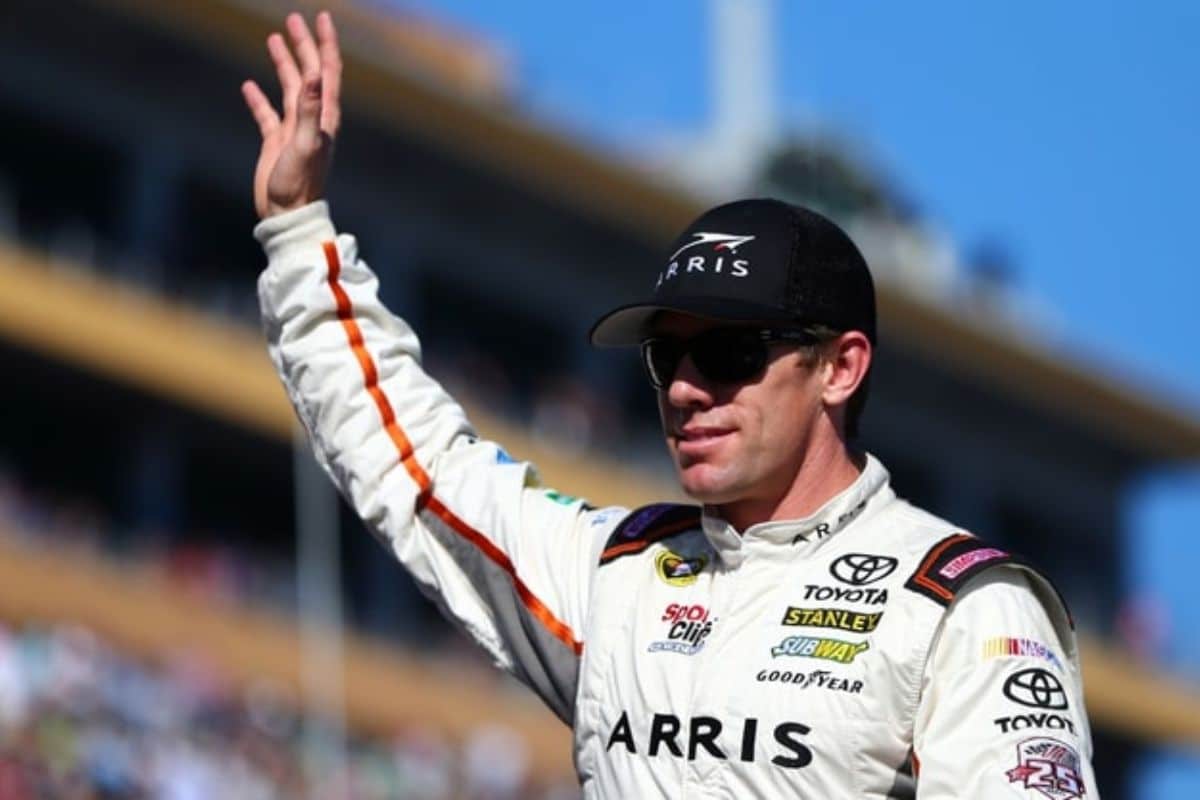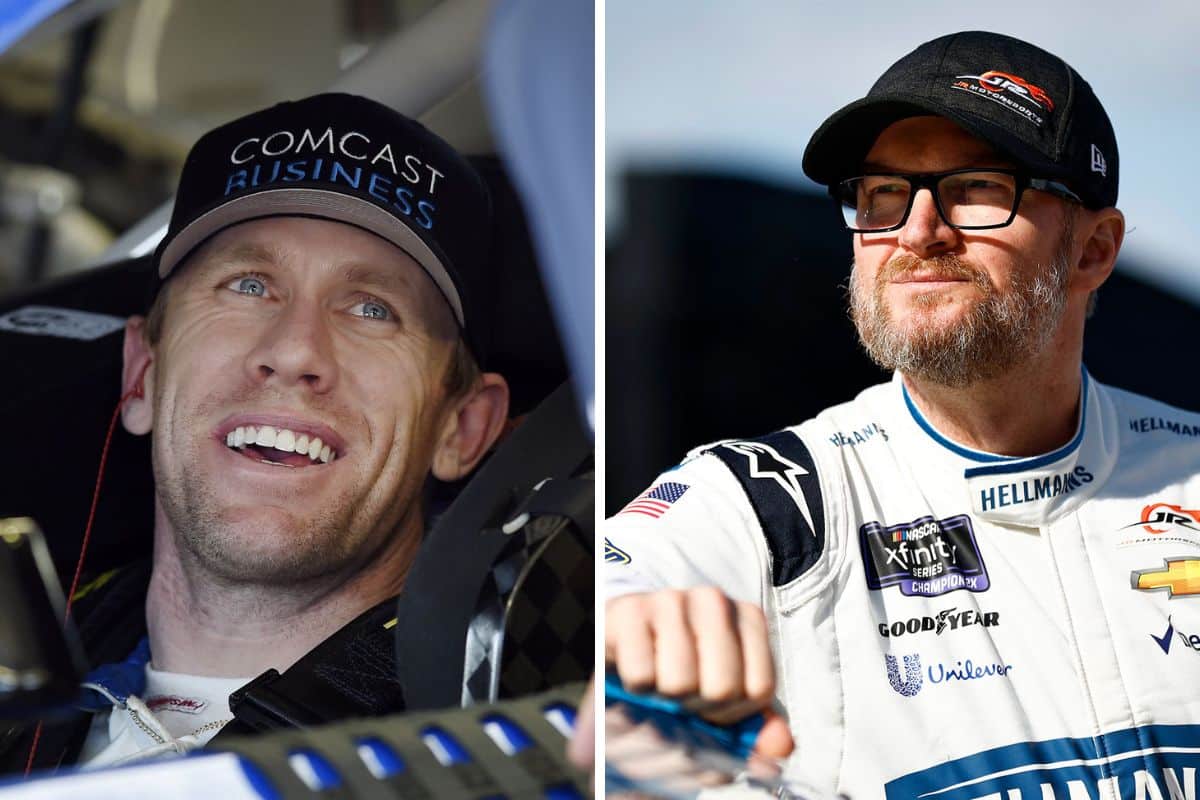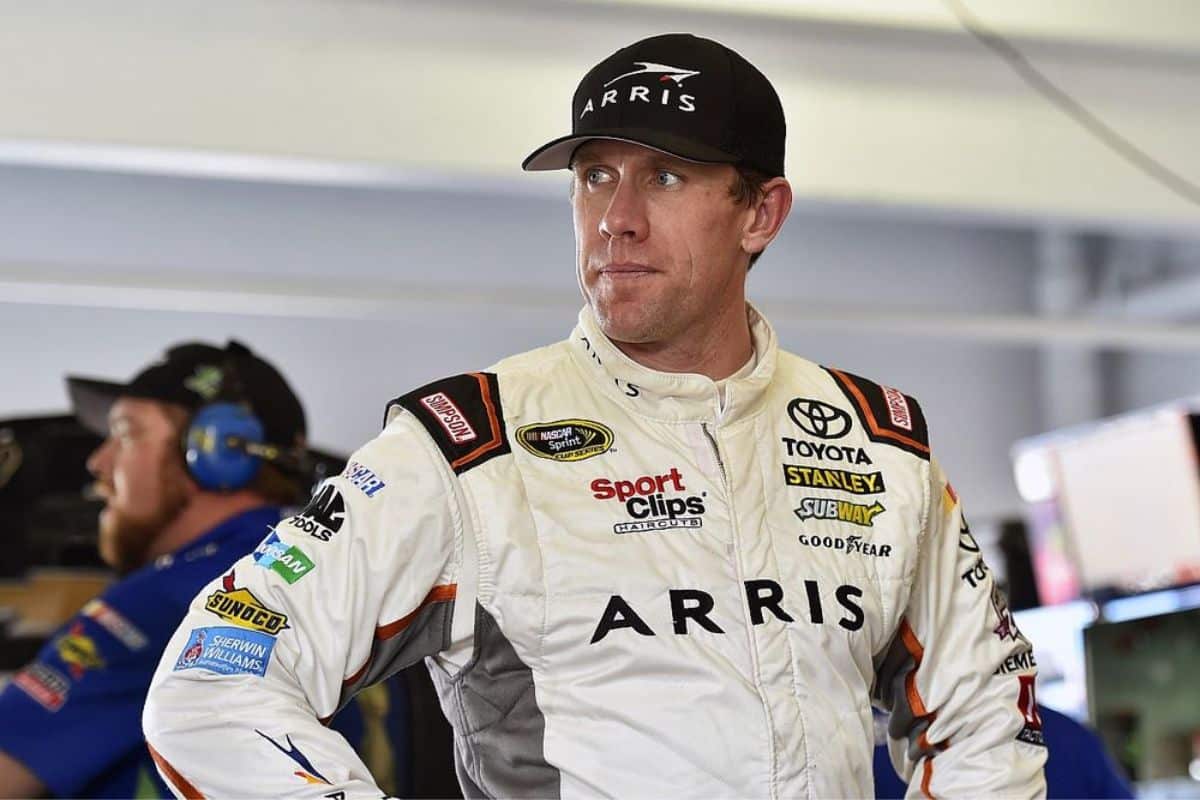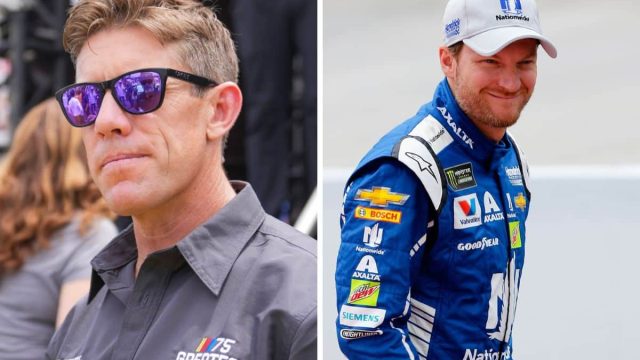Carl Edwards Eyes Dale Jr. and Harvick: Carl Edwards’ recent induction into the NASCAR Hall of Fame has sparked discussions about his future contributions to motorsport, particularly through broadcasting. Observing the successful shifts of Dale Earnhardt Jr. and Kevin Harvick, Edwards appears poised to utilize his racing expertise in a new, less physically demanding role. This strategic change not only highlights a broader trend among veteran drivers but also raises questions about NASCAR’s objectives in enhancing its broadcast appeal with seasoned insiders.
Key Highlights
- Carl Edwards considers transitioning to broadcasting, following Dale Earnhardt Jr. and Kevin Harvick.
- Post-Hall of Fame induction, Edwards aims to utilize his expertise in a new role.
- Broadcasting offers Edwards a less physically demanding way to stay connected to motorsport.
- Edwards’ move aligns with the trend of veteran drivers enriching race commentary.
- NASCAR’s strategy includes veteran drivers like Edwards to boost fan engagement.
The Physical Demands of Motorsport
Motorsport demands an extraordinary level of physical endurance and strength, challenging drivers to maintain control of their vehicles under extreme conditions. The G-forces exerted on a driver’s body during high-speed turns and braking are substantial, often requiring significant upper body strength and precise muscular coordination. The physical exertion does not stop there; drivers must also utilize their legs to manage the throttle and brake with finesse, while their arms and upper body remain engaged in steering and stabilizing the car.
Sustaining performance over prolonged periods adds another layer of complexity. Unlike many sports where brief bursts of activity are interspersed with rest, motorsport drivers endure continuous physical and mental strain for hours on end. The cockpit of a race car is an environment that subjects drivers to extreme temperatures and constant vibrations, further accentuating the physical toll. This relentless intensity often leads to fatigue over a driver’s career, making longevity a significant challenge.
The physical demands also exert a psychological burden. Drivers must maintain strong focus, making split-second decisions while managing the physical stress on their bodies. This mental fortitude is as critical as physical strength, as lapses in concentration can lead to catastrophic outcomes.
Given these rigorous demands, it is not surprising that retired drivers like Dale Earnhardt Jr. and Kevin Harvick shift to careers in broadcasting, where physical strains are markedly reduced. This change allows them to utilize their expertise and passion for motorsport in a less physically taxing environment, a path that Carl Edwards appears poised to follow, recognizing the long-term physical consequences of a career behind the wheel.

Carl Edwards Inducted into the NASCAR Hall of Fame
In recognition of his remarkable contributions and achievements, Carl Edwards was recently honored with an induction into the NASCAR Hall of Fame. The announcement came on May 21st while Edwards was mid-flight. Upon landing, his wife delivered the exhilarating news, leaving the 44-year-old driver flabbergasted. Edwards, known for his consistent performance and sportsmanship, expressed astonishment and deep appreciation for the honor, stating, “I was shocked, and I still am at how much it means to me.” This induction serves as a confirmation of his enduring impact on the sport of NASCAR.
Edwards’ career is marked by many accolades and memorable moments, reflecting his relentless pursuit of excellence on the track. His induction into the Hall of Fame not only cements his legacy but also sets the stage for his future contributions to motorsport, a domain he remains passionate about.
| Statistic | Value | Significance |
|---|---|---|
| NASCAR Cup Wins | 28 | Demonstrates his competitive edge |
| Top 10 Finishes | 220 | Highlights his consistent performance |
| Championships | 0 | Closest finish was 2nd in 2011 |
| Notable Achievement | 2007 Busch Series Win | Highlights versatility and skill across series |
Carl Edwards Prefers Broadcasting Over Racing
Although Carl Edwards made his mark as a formidable driver, his recent disclosures suggest a growing inclination towards broadcasting over a return to racing. Having amassed 72 NASCAR race wins and leaving an indelible legacy upon his retirement in 2016, Edwards’ shift from behind the wheel to behind the mic is both remarkable and strategic.
Since stepping away from competitive racing, Edwards has devoted much of his time to family and community initiatives, particularly disaster relief efforts in the Midwest. This absence from the NASCAR spotlight led some to question his current relevance within the sport. However, Edwards remains keen to reengage with the NASCAR community, albeit in a different role.
Jeff Gluck of The Athletic recently revealed that Edwards prefers the microphone to the fire suit, a sentiment that aligns with the broader trend of veteran drivers transitioning to broadcasting roles post-retirement. This change allows Edwards to utilize his extensive experience and deep understanding of the sport while maintaining a less physically demanding and more family-oriented lifestyle.
Carl Edwards indicates he’s “much more open” to doing TV “than I ever have been” but he will not be back in a Cup Series car again. He has done some Cup sim stuff, but no plans to race in Cup.” – Gluck
Edwards’ potential move into broadcasting is indicative of his adaptability and desire to stay connected to NASCAR. His analytical ability, combined with firsthand racing insights, positions him as a valuable asset to any broadcasting team. Additionally, his involvement in broadcasting could serve to bridge the gap between his racing career and his ongoing contributions to the sport.

The Trend of Veteran Drivers Transitioning to Broadcasting
A growing shift in NASCAR sees veteran drivers leveraging their racing expertise into successful broadcasting careers. This change is evident with notable examples such as Dale Earnhardt Jr., Kevin Harvick, and Carl Edwards.
The evolution from driver to broadcaster is not merely a career extension but a strategic move that capitalizes on their deep understanding of the sport and their established fan bases.
Carl Edwards, with his previous stints in the ESPN booth during 2012 and 2013, demonstrated the potential for drivers to seamlessly move to broadcasting roles. Edwards’ ability to analyze races with the insight of an insider provided fans with a richer viewing experience. His contributions during Nationwide Series races at Darlington Raceway and Kentucky Speedway were well-received, highlighting the value of firsthand racing experience in the commentary booth.
Kevin Harvick’s recent entry into the FOX Sports booth this season continues this trend, bringing his extensive knowledge and charismatic presence to the screen. Likewise, Dale Earnhardt Jr.’s move from NBC to TNT Sports for 2025 exemplifies the demand for veteran insights in racing broadcasts.
This trend reflects a broader recognition within the industry that veteran drivers can enrich the broadcast product. Their ability to translate complex racing dynamics into relatable commentary enriches the viewer’s understanding and enjoyment of the sport.
The fans’ response to these changes has been overwhelmingly positive, suggesting that this trend will continue to shape the future of NASCAR broadcasting. As more veteran drivers consider post-racing careers, the broadcasting booth appears to be a natural and beneficial next step.
NASCAR’s Strategy Behind Bringing Veteran Drivers to the Broadcasting Booth
Recognizing the immense value veteran drivers bring to broadcasts, NASCAR strategically integrates these seasoned professionals into the booth to enrich fan engagement and boost the viewing experience. For the 2022 season, NASCAR on FOX officials creatively decided to rotate a series of veteran drivers, filling the gap left by Jeff Gordon’s departure to an executive role at Hendrick Motorsports. This strategy was not merely a temporary measure but a calculated move to capitalize on the deep insights and charismatic personalities of seasoned drivers.
The approach aimed to enrich the connection between the sport and its audience, offering fans a more detailed, deeper understanding of the races. Veteran drivers bring with them a wealth of firsthand experience and technical knowledge, which they can articulate in ways that resonate with both die-hard enthusiasts and casual viewers. As FOX producer Barry Landis detailed to Forbes, the scheme effectively increased fan engagement, validating the strategy’s success.
“I’ve enjoyed all three of them. They were all so different in their approach, and it’s really tough to rank them. All three of them touched people on different levels, and they enjoyed certain aspects of their game.” – Landis
Longtime announcer Mike Joy, who has been a stalwart in the booth since 2001, also praised this creative approach. Joy highlighted how the rotational presence of different veteran drivers added a fresh dynamic to race commentary, providing diverse perspectives and keeping the broadcast content lively and engaging. This method not only broadens the appeal of the broadcasts but also ensures a continuous influx of new insights and anecdotes that only seasoned drivers can provide.
“We’re sitting on a three-legged stool. Inform, educate and entertain are the three legs,” Joy said. “By mixing up the commentary booth, it helps keep things fresh for both Clint and me.”

News in Brief: Carl Edwards Eyes Dale Jr. and Harvick
The evolution of Carl Edwards from racing to broadcasting, following his NASCAR Hall of Fame induction, reflects a broader trend among veteran drivers seeking less physically demanding roles while leveraging their expertise.
This shift enriches the broadcast product, providing fans with deeper insights into motorsport.
NASCAR’s strategy of integrating experienced drivers into broadcasting roles not only preserves the legacy of these athletes but also enriches the sport’s narrative and fan engagement.
Our Reader’s Queries
Q: Why did Carl Edwards quit driving?
A: If anything, fans wanted him to fight back stronger after losing the 2016 championship. Edwards had said that motor racing took up too much time, preferring to spend it with family, and had no regrets. Well, that may just be the tip of the iceberg.
Q: Did Dale Jr ever race with his dad?
A: The first time I raced against my dad was in a 1998 NASCAR exhibition at Twin Ring Motegi Speedway, Japan. Fresh off my NASCAR Busch Series championship, we drove competing Coca-Cola-sponsored Chevrolets.
Also Read: Dale Jr.’s Bold Demand to NASCAR After Coke 600 Debacle!
